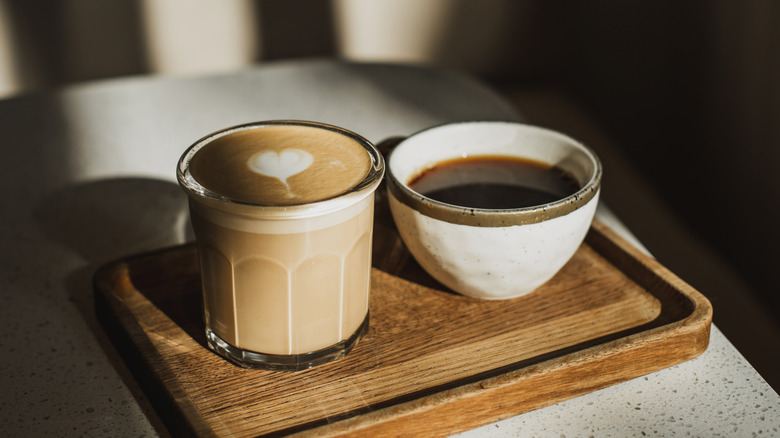Your Coffee Cup's Material Can Make Or Break Your Morning Brew
We understand that, when it comes to coffee, not all of us are picky. When you need a hit of caffeine to start the day (or to finish the day, if you're drinking coffee at night), you don't care if you're drinking your coffee from a ceramic mug, a Styrofoam cup, or an old shoe. But if you really want to be sure you're getting an ideal java experience, it behooves you to consider what kind of cup you're drinking out of.
It can be the difference between a functional hit of caffeine and a truly satisfying morning ritual — and if you want the best possible results, you might want to use a ceramic cup rather than one made from stainless steel, glass, plastic, or paper. (But of course, you are the master of your own destiny, and you're free to ignore us and use whatever you want.)
Really, it is more difficult to imagine that the cup you drink from wouldn't affect the taste. After all, the cup is the first thing your mouth touches when you go in for a sip. And there are plenty of different, perhaps even unexpected, intersections of flavor between the coffee and the cup material. So why is ceramic a better choice for your cup of Joe than some other popular materials?
Ceramic cups are neutral, and ideal for coffee
In order to understand why ceramic coffee mugs are the best choice, it's worth looking at the competition. Plastic cups, in general, aren't necessarily a good choice – do you take your coffee with milk, sugar, or microplastics? – but specifically when it comes to taste, they have a habit of absorbing a little bit of whatever's put inside it. That's not necessarily a problem if you're only using those cups for coffee, but if you cohabit with a tea drinker, it might create some unpleasant cross-contamination.
Stainless steel, like the kind that makes up the popular Stanley cup, may keep your drink hot, but it can also lend it a certain off flavor for the same reason as plastic cups. Glass cups are the opposite: They don't really affect the flavor (except, perhaps, for a slight perceived sweetness), but they are lousy at retaining temperature. (Of course, this can be a good thing, depending on your own preferences.) And paper cups, no matter how convenient they may be, also lends coffee a different, somewhat cardboard-y flavor, which is also affected by a wax coating.
That leaves ceramic in the Goldilocks zone. Its flavor is neutral, and it retains heat reasonably well, meaning it's the ideal choice for your morning cuppa. Your home brew may not hit quite the same as diner coffee, but it'll still be pretty darn good.

